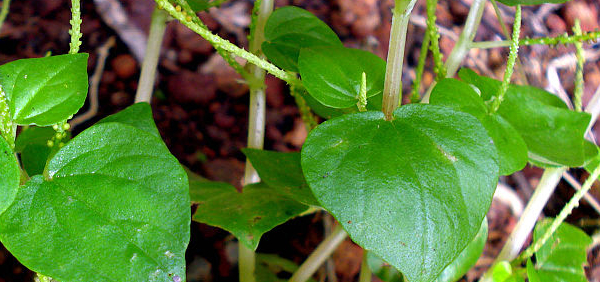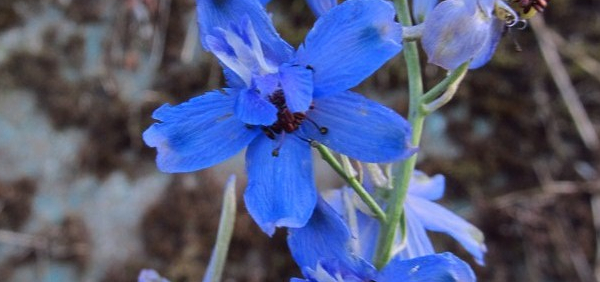shatavari :
 It helps to enhance your memory and protects against amnesia. It also acts as an effective aphrodisiac and diuretic. Additionally, it is known as a versatile female tonic.
It helps to enhance your memory and protects against amnesia. It also acts as an effective aphrodisiac and diuretic. Additionally, it is known as a versatile female tonic.Asparagus is a climbing undershrub with widespread applications as diuretic, cooling
agent and an excellent safe herbal medicine for ante-natal care. It is useful in nervous
disorders, dyspepsia, diarrhoea, tumours, inflammations, vitiated conditions of vata and
pitta, burning sensation, hyperdipsia, ophthalmopathy, nephropathy, hepatopathy, strangury,
scalding of urine, throat infections, tuberculosis, cough, bronchitis, gleet, gonorrhoea,
leucorrhoea, leprosy, epilepsy, fatigue, hyperacidity, colic haemorrhoids, hypertension,
abortion, agalactia, cardiac and general debility (Warrier et al, 1993).
Shatavari is described in Rigveda and Atharvaveda. In Ayurvedic classics it is
prescribed as a cooling agent and uterine tonic. It is the main ingredient in ayurvedic
medicines like shatavari gulam and shatavari ghrtam. Besides quenching thirst, its root
juice helps in cooling down the body from summer heat, curing hyper-acidity and peptic
ulcer. It contains good amount of mucilage which soothes the inner cavity of stomach. It
relieves burning sensation while passing urine and is used in urinary tract infections. It
contains an anticancer agent asparagin which is useful against leukaemia. It also contains
active antioxytocic saponins which have got antispasmodic effect and specific action on
uterine musculature. It is very good relaxant to uterine muscles, especially during pregnancy
and is used to prevent abortion and pre-term labour on the place of progesterone
preparations. Its powder boiled with milk is generally used to prevent abortion. It increases
milk production in cows and buffaloes. Its preparations in milk helps in increasing breast
milk in lactating women. Its proper use helps in avoiding excessive blood loss during
periods. It clears out infections and abnormalities of uterine cavity and hence it is used to
rectify infertility in women. The leaves are used to prepare toilet soaps. The plant has also
ornamental value both for indoor and out door decorations (Syamala, 1997).
Taxonomical Classification
Kingdom: Plantae - Plants
Family: Fabaceae
VERNACULAR NAMES
Sanskrit: SatavariEnglish: flax hemp
Hindi: Satavari
Telugu: Pilligadalu, Philithaga
Bengali: Shatamuli
Marathi: Satavari
Konkani: Satavari
Oriya: Manajolo
Gujarathi: Ekalkanto
Tamil: Ammaikodi, Kilwari
Malayalam: Satavari
Kannada: Aheruballi
Synonyms
Synonyms in Ayurveda: shatavari, satavari, shatapadi, vrishya, dipya, dvipshatru, adharkanthika, supatra, bahumula, shatahriya, narayani, laghuparnika, supatra, bahumula, shatahriya, narayani, laghuparnika, shatavirya, abhiru, rasaCultivation:
The plant comes up well under a wide range of tropical and subtropical climate. Fertile moist sandy loam soils are ideal for its cultivation though it grows in a wide range of soils. Better root development is observed in soils in increased proportion of sand. However, a decline in the yield of the crop is noticed in soils containing previous years residue of the roots. Asparagus plant is best grown from its tuberous roots even though it can be successfully propagated through seeds. Since root tubers are of commercial value seed propagation provides economic advantage to the farmers. Seeds usually start germinating after 40 days and average germination is 70% (Tewari and Misra, 1996).For the cultivation of the crop, the land is ploughed well with pre-monsoon showers
and seed nurseries are raised on seed beds of approximately 1m width, 15cm height and
suitable length. Seed nursery should be irrigated regularly and kept weed free. With the
onset of monsoon in June-July the main field is ploughed thoroughly and pits of size 30cm
cube are dug at a spacing of 60-100cm. Tiwari and Misra (1996) have reported that
irrespective of more number of roots and higher fresh weight per plant under wider spacings,
the per hectare yields were highest in the closer spacing of 30cm x 30cm. The pit is filled
with a mixture of top soil and well decomposed FYM or compost applied at 10 - 15 t/ha and
the seedlings are transplanted. Application of N, P2O5 and K2O at 60:30:30 kg/ha increases
the root yield. Regular irrigation and weeding are required to realize higher yields.
Standards are to be provided for training the plant (Sharma et al, 1992). Few pests and
diseases are observed on this crop.
Propogation:
Asparagus plant is best grown from its tuberous roots even though it can be successfully propagated through seeds. Since root tubers are of commercial value seed propagation provides economic advantage to the farmers. Seeds usually start germinating after 40 days and average germination is 70% (Tewari and Misra, 1996).Harvesting:
Harvesting the crop after two years provided higher root yield than annual harvests in pots as well as in field experiments. Irrigating the field prior to harvest enables easy harvesting of the root tubers. The average yield is 10 - 15 t/ha of fresh root tubers though yields over 60t/ha have been reported.Phytochemistry:
Asparagus roots contain protein 22%, fat 6.2%, Carbohydrate 3.2%, Vitamin B 0.36%, Vitamin C 0.04% and traces of Vitamin A. It contains several alkaloids. Alcoholic extract yields asparagin- an anticancer agent. It also contains a number of antioxytocic saponins, viz. Shatavarisn - I to IV (Syamala, 1997). Leaves contain rutin, diosgenin and a flavonoid glycoside identified as quercetin - 3 - glucuronide. Flowers contain quercetin hyperoside and rutin. Fruits contain glycosides of quercetin, rutin and hyperoside while fully ripe fruits contain cyanidin - 3 - galactoside and cyanidin - 3 - glucorhamnoside.PHARMACOLOGY:
Root is demulcent, diuretic, aphrodisiac, tonic, alterative, antiseptic, antidiarrhoeal, glalctogogue and antispasmodic. Aerial part is spasmolytic, antiarrhythmic and anticancer. Bark is antibacterial and antifungal.Morphology:
Satavari, Asparagus racemosus Willd. belongs to the lily family, Liliaceae. Asparagus adscendens Roxb., A. filicinus Lam., A. gonoclados Baker, A. officinalis Linn. and A. sarmentosus Willd. are the other important medicinal plant species of the genus. A. racemosus Willd. is an armed climbing undershrub with woody terete stems and recurved or rarely straight spines. The tuberous succulent roots are 30cm to 100cm or more in length, fascicled at the stem base, smooth tapering at both ends. Young stems are very delicate, brittle and smooth. Leaves are reduced to minute chaffy scales and spines; cladodes triquetrous, curved in tufts of 2-6. Flowers are white fragrant in simple or branched recemes on the naked nodes of the main shoots or in the axils of the thorns. Fruits are globular or obscurely 3-lobed, pulpy berries, purplish black when ripe; seeds with hard and brittle testa.Geographical distribution:
The plant is found wild in tropical and subtropical India including Andaman and Nicobar Islands. It is distributed from mean sea level upto 1500m in the Himalayas from Kashmir eastwards. The crop is cultivated in Kerala, Tamil Nadu, Andhra Predesh and northern states in India. However, most of the requirement of the industry is met through wild collections from forests. It is also grown in gardens.Ayurvedic Formulations:
Common Ayurvedic Formulations of shatavari with their IndicationsBrahma Rasayana
Pothin Dravakam - Attin Brath is a general medicine to increase strength, vitality and stamina.
Sukumaram Kashayam
- » Classification and names of shatavari
- » Synonyms and definitions of shatavari
- » Drug Properties of shatavari
- » Chemical Constituents of shatavari
- » Standardization of shatavari
- » Parts used and Dosage of shatavari
- » Morphology and Histology of shatavari
- » Distribution and Conservation of shatavari
- » Cultivation of shatavari
- » shatavari in the market
- » Medicinal Uses of shatavari
- » Researches and clinical trails of shatavari
- » shatavari in other sytems of medicine
- » Ayurvedic formulations with shatavari
- » Images of shatavari













